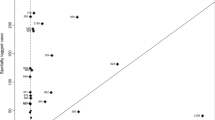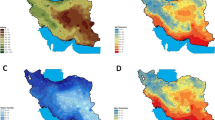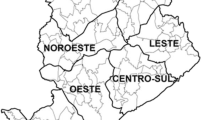Abstract
Visceral leishmaniasis (VL) as a vector-borne disease, is an endemic in the northwest and south of Iran and sporadic in other areas in the country. This study was performed to investigate the Granger causality analysis of the impacts of climatic factors on VL in northwestern Iran throughout the period from 1995 to 2019. In a longitudinal study, the epidemiological data of patients suffering from VL were collected from the health centers and hospitals in Meshkinshahr County, Ardabil province, between 1995 and 2019. Moreover, the environmental and climatic data of each location, such as temperature, humidity, rainfall, the number of frost and warm days in the year, were obtained from the meteorological center of the county and put into the Excel software. The incidence rate of VL was modeled by time series analysis and to compare its relationship with other time series covariates, the Granger causality analysis was used. The results of Granger causality analysis showed that some climatic variables including daily mean temperature, absolute minimum temperature, maximum and minimum temperature and maximum humidity were the main factors affecting the prevalence of VL in northwestern Iran. The findings greatly demonstrated that the potential of Granger causality in epidemiologic status of VL in northwestern Iran. Moreover, the results suggest that in addition to patient-related and biological factors, environmental and climatic factors such as temperature and humidity also play a major role in completing the transmittance cycle of VL in an endemic focus.


Similar content being viewed by others
References
Alvar J (2010) WHO Leishmaniasis programme, N.T. Diseases, Editor. World Health Organization, Geneva
Asgari Q, Fakhar M, Motazedian H (2006) Nomadic kala-azar in south of Iran. Iran J Publ Health 35:85–86
Bastos AM, Schoffelen JM (2016) A tutorial review of functional connectivity analysis methods and their interpretational pitfalls. Front Syst Neurosci 9:175
Bressler SL, Seth AK (2011) Wiener–Granger causality: a well-established methodology. Neuroimage 58(2):323–329
Champion R, Kinsman LD, Lee GA, Masman KA, May EA, Mills TM et al (2007) Forecasting emergency department presentations. Aust Health Rev 31:83–90
Chappuis F, Sundar S, Hailu A, Ghalib H, Rijal S, Peeling RW et al (2007) Visceral leishmaniasis: what are the needs for diagnosis, treatment and control? Nat Rev Microbiol 5:873–882
Edrissian GhH (1996) Visceral leishmaniasis in Iran and the role of serological tests in diagnosis and epidemiological studies. In: Ozcel MA, Alkan MZ (eds) Parasitology for the 21st century. CAB International, Wallingford
Fakhar M, Asadi kia A, Gohardehi S, Sharif M, Mohebali M, Akhoundi B et al (2014) Emergence of a new focus of visceral leishmaniasis due to Leishmania infantum in Golestan Province, north-eastern of Iran. J Parasit Dis 38:255–259
Fakhar M, Rahmati B (2011) Visceral leishmaniasis in Mazandaran province and review on its current situation in Iran. JBUMS, 13:68–75
Ghatee MA, Sharifi I, Haghdoost AA, Kanannejad Z, Taabody Z, Hatam G et al (2013) Spatial correlations of population and ecological factors with distribution of visceral leishmaniasis cases in southwestern Iran. J Vector Borne Dis 50:179–187
Gramiccia M, Scalone A, Di Muccio T, Orsini S, Fiorentino E, Gradoni L (2013) The burden of visceral leishmaniasis in Italy from 1982 to 2012: a retrospective analysis of the multi-annual epidemic that occurred from 1989 to 2009. Euro Surveill 18:20535
Granger CWJ (1969) Investigating causal relations by econometric models and cross-spectral methods. Econometrica 37:424–438
Granger CWJ, Newbold P (1986) Forecasting econometric time series. Academic Press, New York
Killick-Kendrick R, Rioux JA, Bailly M, Guy MW, Wilkes TJ, Guy FM et al (1984) Ecology of leishmaniasis in the south of France. 20. Dispersal of Phlebotomus ariasi Tonnoir, 1921 as a factor in the spread of visceral leishmaniasis in the Cévennes. Ann Parasitol Hum Comp 59:555–572
Makridakis S, Hibon M (2000) The M3-competition: results, conclusions and implications. Int J Forecast 16:451–476
Mohebali M (2012) Epidemiological status of visceral leishmaniasis in Iran: experiences and review of literature. J Clin Exp Pathol S3:003
Mohebali M (2013) Visceral leishmaniasis in Iran: review of the epidemiological and clinical features. Iran J Parasitol 8:348–358
Mohebali M, Edrissian GH, Shirzadi MR, Akhoundi B, Hajjaran H, Zarei Z et al (2011) An observational study on the current distribution of visceral leishmaniasis in different geographical zones of Iran and implication to health policy. Travel Med Infect Dis 9:67–74
Moradiasl E, Rassi Y, Hanafi-Bojd AA, Vatandoost H, Saghafipour A, Adham D et al (2018) The relationship between climatic factors and the prevalence of visceral leishmaniasis in North West of Iran. Int J Pediatr 6:7169–7178
Moradi-Asl E, Rassi Y, Adham D, Hanafi-Bojd AA, Saghafipour A, Rafizadeh S (2018) Spatial distribution of sand flies (Diptera: Psychodidae; Larroussius group), the vectors of visceral leishmaniasis in Northwest of Iran. Asian Pac J Trop Biomed 8:425–430
Moradi-Asl E, Hanafi-Bojd AA, Rassi Y, Vatandoost H, Mohebali M, Yaghoobi-Ershadi MR (2017) Situational analysis of visceral leishmaniasis in the most important endemic area of the disease in Iran. J Arthropod Borne Dis 11:482–496
Rassi Y, Hanafi-Bojd AA (2006) Phlebotomine sand flies, vectors of Leishmaniases. Noavaran-Elm Publication, Tehran, 126–145
Salahi-Moghaddam A, Mohebali M, Moshfae A, Habibi M, Zarei Z (2010) Ecological study and risk mapping of visceral leishmaniasis in an endemic area of Iran based on a geographical information systems approach. Geospat Health 5:71–77
Sevá AdP, Mao L, Galvis-Ovallos F, Lima T, JM. & Valle D (2017) Risk analysis and prediction of visceral leishmaniasis dispersion in São Paulo State, Brazil. PLoS Negl Trop Dis 11:e0005353
Sharifi I, Aflatoonian MR, Daei Parizi MH, Hosseininasab A, Mostafavi M, Bamorovat M et al (2017) Visceral leishmaniasis in Southeastern Iran: a narrative reviewVisceral leishmaniasis in Southeastern Iran: a narrative review. Iran J Parasitol 12:1–11
Soleimanzadeh G, Edrissian GH, Movahhed-Danesh AM, Nadim A (1993) Epidemiological aspects of kala-azar in Meshkin-Shahr, Iran: human infection. Bull World Health Organ 71:759–762
Torres-Guerrero E, Quintanilla-Cedillo MR, Ruiz-Esmenjaud J, Arenas R (2017) Leishmaniasis: a review. F1000Res, 6, 750
WHO (2020a) Leishmaniasis. https://www.who.int/health-topics/leishmaniasis#tab=tab_1. Accessed 2 Mar 2020
WHO (2020b) Leishmaniasis. https://www.who.int/gho/neglected_diseases/leishmaniasis/en/. Accessed 27 July 2020
Acknowledgements
The study was funded by the Ardabil University of Medial Sciences, Iran. The authors are grateful to the research deputy of Ardabil University of Medical Science. Ethical clearance was earned from the Institutional Ethics Committee of Ardabil University of Medical Sciences.
Author information
Authors and Affiliations
Contributions
Conceptualization: AH AS. Data curation: LZF AS. Formal analysis: AH EG. Funding acquisition: AS. Methodology: AS AH EMA. Project administration: AH AS. Resources: AS. Software: AH. Supervision: AS. Validation: LZF. Visualization: LZF AS. Writing ± original draft: AH AS EG LZF. Writing ± review & editing: ASData curation: LZF AS. Formal analysis: AH EG. Funding acquisition: AS. Methodology: AS AH EMA. Project administration: AH AS. Resources: AS. Software: AH. Supervision: AS. Validation: LZF. Visualization: LZF AS. Writing ± original draft: AH AS EG LZF. Writing ± review & editing: AS
Corresponding author
Ethics declarations
Conflict of interest
The authors declare that they have no conflict of interests.
Additional information
Publisher's Note
Springer Nature remains neutral with regard to jurisdictional claims in published maps and institutional affiliations.
Rights and permissions
About this article
Cite this article
Hamta, A., Saghafipour, A., Zanjirani Farahani, L. et al. The Granger causality analysis of the impact of climatic factors on visceral leishmaniasis in northwestern Iran in 1995–2019. J Parasit Dis 45, 17–23 (2021). https://doi.org/10.1007/s12639-020-01271-z
Received:
Accepted:
Published:
Issue Date:
DOI: https://doi.org/10.1007/s12639-020-01271-z




